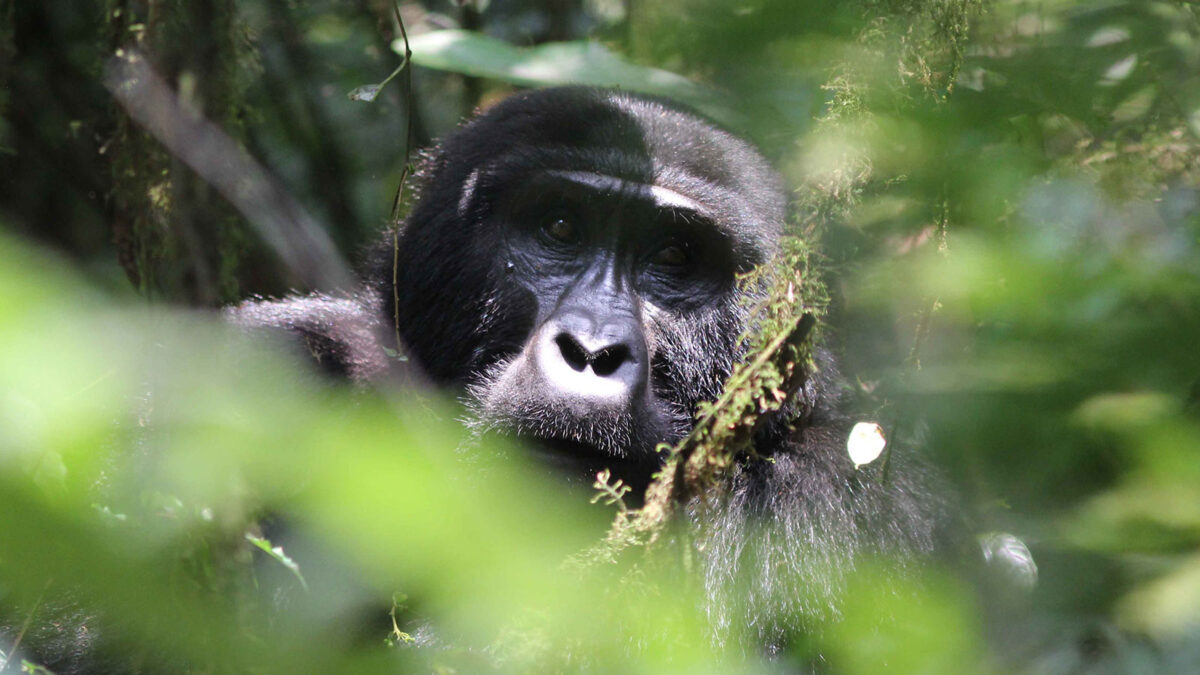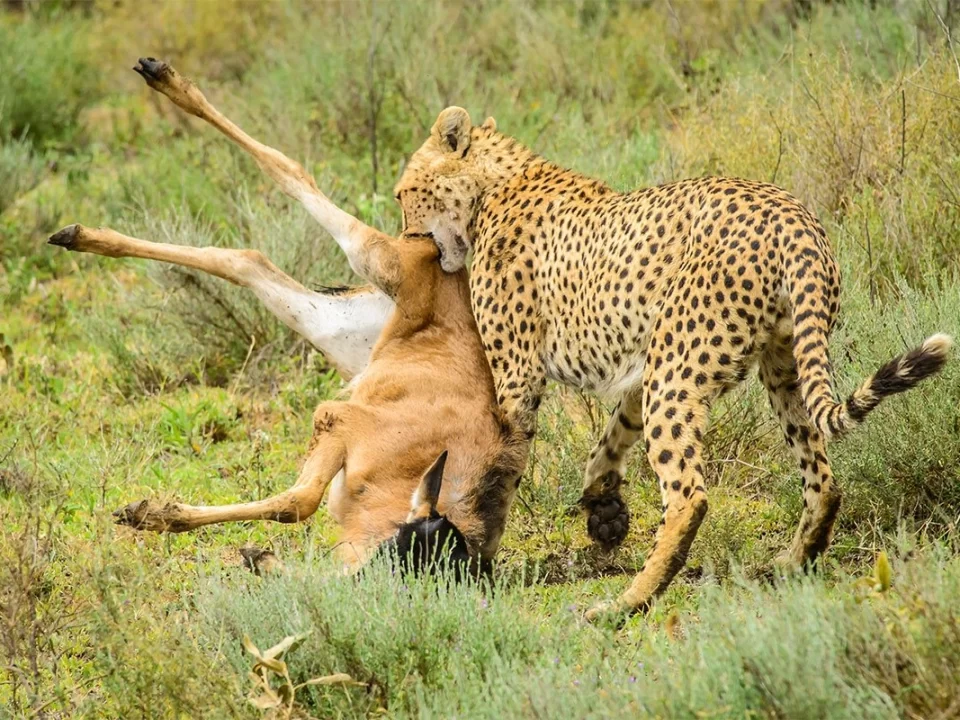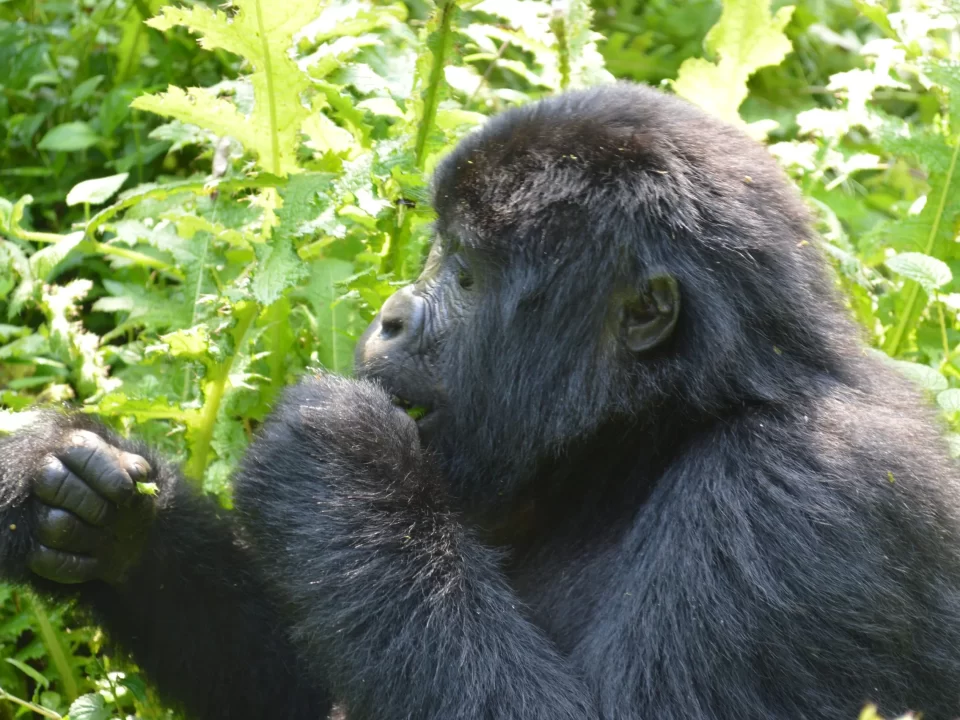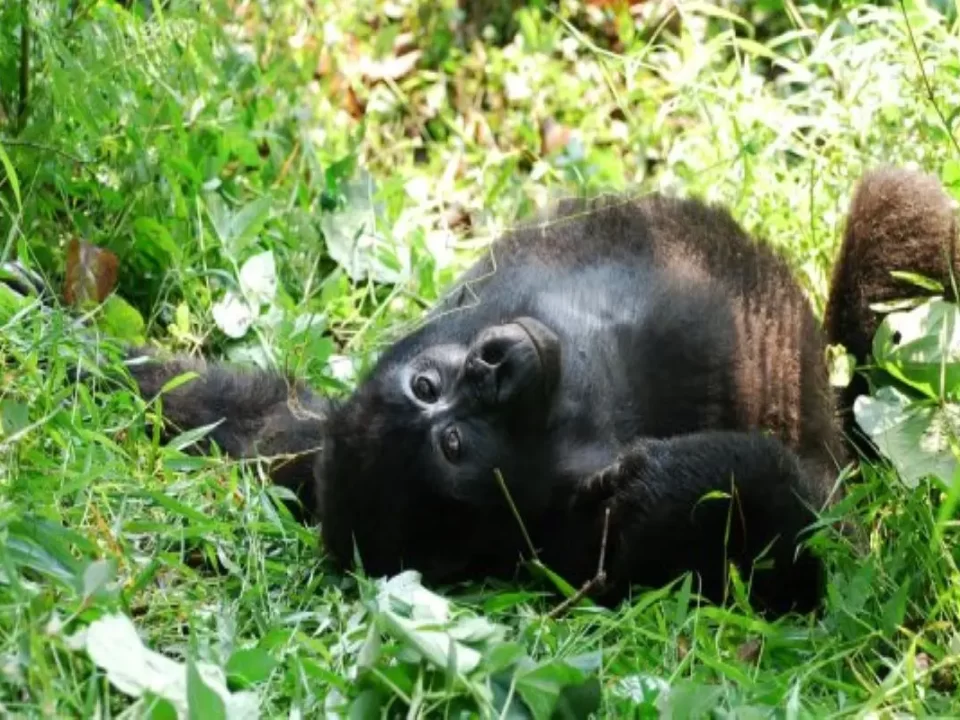15 Frequently Asked Questions About Gorilla Trekking in Africa

Frequently Asked Questions about Kibale Forest National Park
August 2, 2023
15 Frequently Asked Questions About Chimpanzee Trekking In Uganda and Rwanda
August 2, 202315 Frequently Asked Questions About Gorilla Trekking in Africa
What is gorilla trekking, and where can it be experienced?
Gorilla trekking is the thrilling practice of following a family of habituated mountain gorillas in their natural habitat. This unique experience can only be found in three African countries: Uganda, Rwanda, and the Democratic Republic of Congo (D.R.Congo). These countries are home to the last remaining mountain gorillas, which reside in Bwindi Impenetrable National Park, Volcanoes National Park, and Virunga National Park.
How many gorilla permits are issued per day, and why are they limited?
Despite high demand, only 8 gorilla permits are issued per family per day. This limitation is necessary to ensure the conservation and protection of the mountain gorillas, as excessive human presence can disturb their natural behavior and habitat.
What are the key rules and guidelines for gorilla trekking?
Before embarking on a gorilla trek, a briefing is vital to educate visitors about the dos and don’ts. Ranger guides stationed at park headquarters, such as Buhoma, NKuringo, Ntebeko, ORTPN, and Bukima Patrol, provide essential information. Rules include maintaining a distance of about 8 meters from the gorillas, refraining from feeding them, and spending only one hour in their presence when located.
How has gorilla trekking contributed to mountain gorilla conservation?
Gorilla trekking plays a significant role in funding mountain gorilla conservation initiatives. In the past, the mountain gorilla population had reached the brink of extinction, with only about 250 individuals remaining. However, through the revenue generated from gorilla trekking permits, international organizations like the Gorilla Fund and IUCN, along with the respective governments, have been able to support gorilla conservation efforts. The world population of mountain gorillas has now increased to over 1000 individuals.
What is the definition of gorilla trekking?
Gorilla trekking is the practice of spending time with a habituated family of mountain gorillas for about an hour. This unique opportunity allows tourists to observe these magnificent creatures in their natural habitat, contributing to their conservation.
How does gorilla trekking benefit local communities?
The mountain gorilla conservation efforts aim to involve and benefit local communities. By hiring locals as rangers, porters, and support staff, gorilla trekking creates employment opportunities. Additionally, part of the funds generated from gorilla trekking permits is allocated to support local projects, such as community walks, thereby enhancing community development.
Where can one buy gorilla trekking permits, and what should be considered?
Gorilla trekking permits can be purchased at various locations. In Uganda, permits are available at Uganda Wildlife Authority, in Rwanda at Rwanda Development Board, and in D.R. Congo at Goma Virunga Park offices. It is crucial to check permit availability before purchasing, as they can sell out quickly. Once availability is confirmed, permits should be fully paid for, as they are issued on a first-come-first-served basis. At Trek Africa Expeditions, permits can be reserved on behalf of clients, and necessary personal details are required for the permit issuance.
What is the cost of a gorilla trekking permit in each country?
The cost of gorilla trekking permits varies among the three countries. In Uganda, the permit costs USD800 for foreign non-residents, USD700 for foreign residents of East Africa, and 300,000 shillings for East African residents. In Rwanda, the permit costs $1,500 for foreign non-residents. In D.R.Congo, the price is $450 for foreign non-residents, $200 for SADC members, and $150 for Congolese individuals per trek.
What is included in the gorilla trekking permit?
The gorilla trekking permit fee primarily goes towards conservation funding. It includes park fees, medical care, ranger guide fees, and local community support fees. However, hiring a porter before the trek and tipping are not covered by the permit fee.
Is there an age limit for gorilla trekking?
Yes, the age limit for gorilla trekking is 15 years in all three countries – Uganda, Rwanda, and D.R.Congo. This measure is in place to ensure the safety and well-being of both visitors and the mountain gorillas.
How many people are allowed to participate in a gorilla trekking group?
Each gorilla trekking group is limited to a maximum of 8 persons, regardless of the country. This limitation ensures minimal disruption to the gorillas’ natural behavior and environment.
What is the best time to go gorilla trekking?
The best time to go gorilla trekking is during the drier months of June to September and December. During these periods, the trails are more passable as there is less undergrowth blocking the way. However, trekking can still be done during the rainy seasons in March to May and November.
Which park is the best choice for gorilla trekking?
Choosing the best park for gorilla trekking is a personal decision based on individual preferences and objectives. Bwindi Impenetrable National Park in Uganda is an excellent option, as it is home to almost half of the world’s total mountain gorilla population. Rwanda’s Volcanoes National Park offers shorter gorilla trekking itineraries and easy accessibility from Kigali Airport. D.R.Congo’s Virunga National Park provides a budget-friendly option, although it has been affected by civil unrest.
Is gorilla trekking worth booking?
Absolutely! Gorilla trekking offers a once-in-a-lifetime adventure to encounter these majestic creatures in their natural habitat. The feeling of locating mountain gorillas and gazing into their dark brown eyes creates an unforgettable experience. Despite mixed feelings, the knowledge that mountain gorillas are harmless adds to the thrill of the encounter. Moreover, the Virunga area, shared by the three countries, offers opportunities to spot other primates and a rich birdlife.
How many times can one go gorilla trekking?
Each gorilla permit is valid for one person per day per trek. However, visitors can go gorilla trekking as many times as they desire, depending on their budget and the incredible experience they wish to relish.
Is gorilla trekking safe?
Safety measures during gorilla trekking are given high priority in Bwindi Impenetrable National Park and Volcanoes National Park. In D.R.Congo’s Virunga National Park, despite some rebel activities, tourists’ protection is well taken care of. Armed rangers escort visitors into the forest each morning and maintain communication with park authorities for security purposes. Unusual behavior in the forest is rare, and rangers are well-prepared to call for backup if necessary. Both Rwanda and Uganda also prioritize security, and Bwindi Impenetrable Forest is under the watch of the defense forces.
How physically demanding is gorilla trekking?
Gorilla trekking requires some physical fitness due to the varied terrain and thick vegetation. The trek involves hiking slopes to locate the mountain gorillas, especially during the rainy seasons when they tend to feed from the slopes. The trails are generally clear, thanks to the efforts of ranger guides who use pangas to cut creeping tendrils.
How should one prepare for gorilla trekking?
To prepare for gorilla trekking, it is essential to book the permits in advance and confirm availability for the preferred dates. Engaging in physical fitness exercises before the trek is also recommended to endure the hike in the gorilla trekking areas. Creating a list of necessary trekking gear is crucial to avoid forgetting important items. Additionally, secure accommodation immediately after obtaining gorilla permits to ensure a smooth experience during the safari.
Is Trek Africa Expeditions a trusted tour operator for gorilla trekking?
Yes, Trek Africa Expeditions is a reputable tour operator in the East African region, offering reliable safari planning and execution. They have a team of office and field staff dedicated to ensuring a seamless safari experience, from planning to execution. With positive reviews on platforms like TripAdvisor and SafariBookings, Trek Africa Expeditions is a trustworthy option for those seeking an unforgettable gorilla trekking adventure.
These are the 15 frequently asked questions about gorilla trekking in Africa, providing comprehensive information for anyone planning to embark on this unique and awe-inspiring journey.




